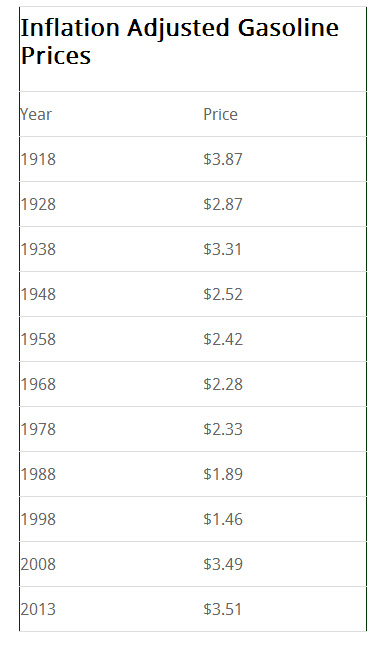Is the price of gasoline really low or does it just feel that way?
In parts of the Twin Cities area, it’s not hard to find regular unleaded for $1.97, which feels almost like the days when gas stations gave away a free set of steak knives with a fill-up.
But they’re not really that low — at least not as low as they feel — or so the Wall St. Journal claims today.
In 2012, the national annual average for a gallon of regular unleaded gas—the yardstick for gauging prices—hit a high of $3.77, capping a series of years in which the average exceeded $3 a gallon. Before that, the last time the average was so high was in the early 1980s when, adjusted for inflation, it topped $3.60.
That’s why today’s prices feel so affordable. On New Year’s Day, the national daily average was $2.23 a gallon, according to Gas Buddy, a website that publishes real-time prices, and in many places the cost was substantially lower. Nearly 30% of the 130,000 vendors tracked by Gas Buddy across the country, or about 38,200 stations, were selling gas for less than $2 a gallon.
But the lowest prices today don’t match the bottom-of-the-barrel prices of the past 40 years and it isn’t likely the current prices will stay low as long.
Actually, they do, however. The inflation-adjusted price for the $1.19-a-gallon gasoline in 1990 is $2.15 in today’s dollars.
In fact, on this date in 1994, the average price of gasoline was $.99, the last time the average price would be that low. That’s $1.58 in today’s dollars. For more than half the decade gasoline hovered between $1.04 and $1.10 ($1.66 today), according to the Energy Information Agency. It dropped to $.88 at this time in 1999 ($1.26 today), but that was pretty much a fluke.
Consider this charge from inflation.com.
Now how low do the current prices feel?
Related: As gas prices keep changing, Americans keep adjusting to the wild price swings (The Kansas City Star).
Why oil prices keep falling — and throwing the world into turmoil (Vox).

